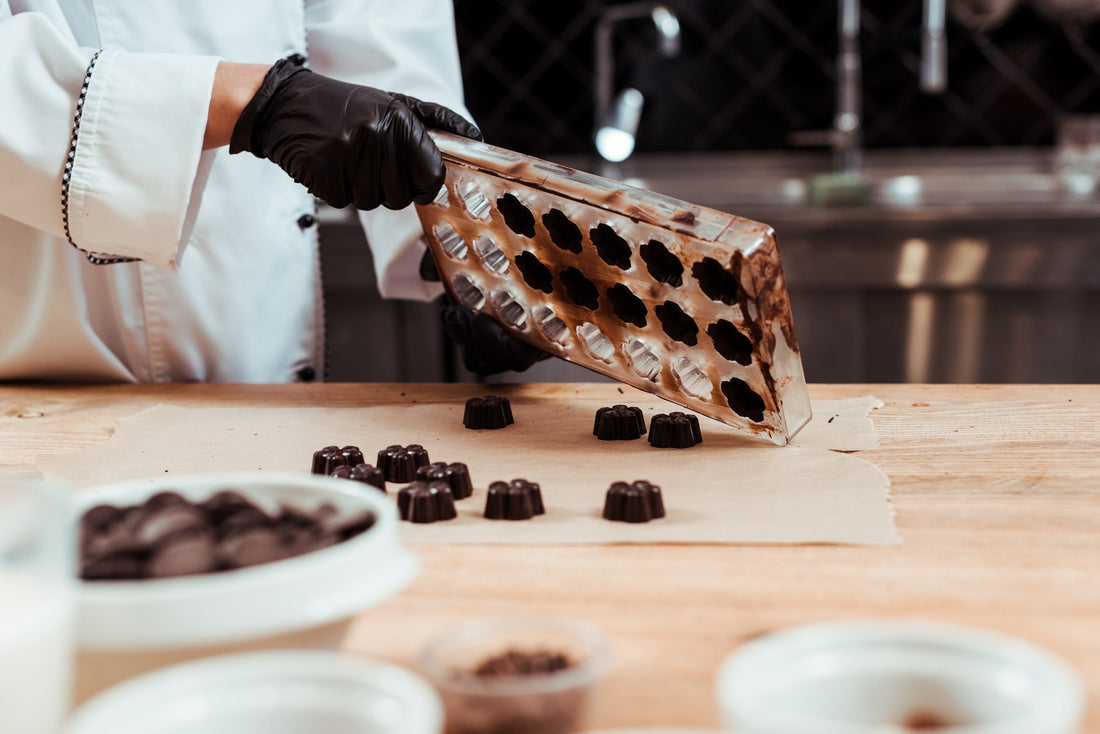
Professional guide to chocolate tempering
Tempering is one of the most important steps in professional chocolate processing. Every time chocolate is melted to be poured into molds, used for coating, or shaped, its internal structure changes: the cocoa butter crystals lose stability, which can affect the final result.
To achieve glossy, crisp, and easy-to-handle chocolate, you need to restore balance to its structure through tempering: a precise process of controlled cooling and reheating that allows the cocoa butter to crystallize in its most stable form.
When tempering is done right, chocolate is immediately recognizable:
🍫 It has a smooth, shiny surface, free from white streaks (the so-called "bloom") caused by imperfect crystallization
🍫 It breaks cleanly with the classic “snap,” a sign of good structure
🍫 It melts in your mouth but holds its shape at room temperature
🍫 It releases easily from molds, thanks to a slight contraction as it cools
In this article, we'll look at how the process works, the most commonly used professional techniques, and the essential tools for flawless results.
How to temper chocolate: professional steps and techniques
Tempering chocolate requires both precision and the right method. To achieve perfect results, you must follow three key phases, melting, cooling, and final reheating. And, of course, you must have the right tools on hand.
1. Melting
First, the chocolate must be completely melted to eliminate any pre-existing cocoa butter crystals and create a smooth base. This is typically done using a double boiler or a microwave set to low power, stirring frequently to avoid burning.
2. Cooling
Once melted, the chocolate must be cooled until stable cocoa butter crystals form. This is the core of the process — the step that truly determines the final quality.
There are several methods for cooling the chocolate and guiding it toward perfect crystallization. Here are the main ones:
- Marble tabling: a portion of the melted chocolate is poured onto a marble surface and worked with steel spatulas, spreading and gathering it repeatedly. This constant movement promotes uniform cooling.
- Seeding: finely chopped solid chocolate is added to the melted chocolate and stirred until fully melted. This gradually lowers the temperature and encourages the formation of stable crystals.
3. Final Reheating
Finally, the chocolate is gently reheated to reach the working temperature — ideal for pouring into molds, glazing, or shaping — without compromising the crystalline structure just formed.
The advantages of a professional chocolate tempering machine
Given the precision required in each step of tempering, many professionals choose to use an automatic tempering machine. This tool continuously manages heating, cooling, and maintaining the chocolate at the correct working temperature.
A continuous tempering machine allows you to:
- Reduce errors due to temperature fluctuations
- Work with large quantities consistently and without interruptions
- Save time by keeping the chocolate always ready to use
An ideal choice for workshops, pastry shops, and chocolatiers who want to combine artisanal quality with efficiency.
What temperature should chocolate be tempered at?
One of the most frequently asked questions when working with chocolate is: what are the correct temperatures?
The answer depends on the type of chocolate, as each variety (dark, milk, white) has a different composition and crystallizes in slightly different ways.
| Type of Chocolate | Melting | Cooling | Working Temp |
| Dark chocolate | 45–50 °C | 27–28 °C | 31–32 °C |
| Milk chocolate | 45–50 °C | 26–27 °C | 30-31°C |
| White chocolate | 38–45 °C | 26–27 °C | 29-30 °C |
📌 Pro tip: Always use a reliable digital thermometer — just a few degrees off can ruin the result.
For those working continuously, a chocolate cooling cabinet can also be very helpful. These are designed to maintain constant temperature and humidity conditions, ideal for storage and crystallization phases.
Unsure which equipment is right for you?
Contact us — our team is here to help you find the best solutions for your workshop.